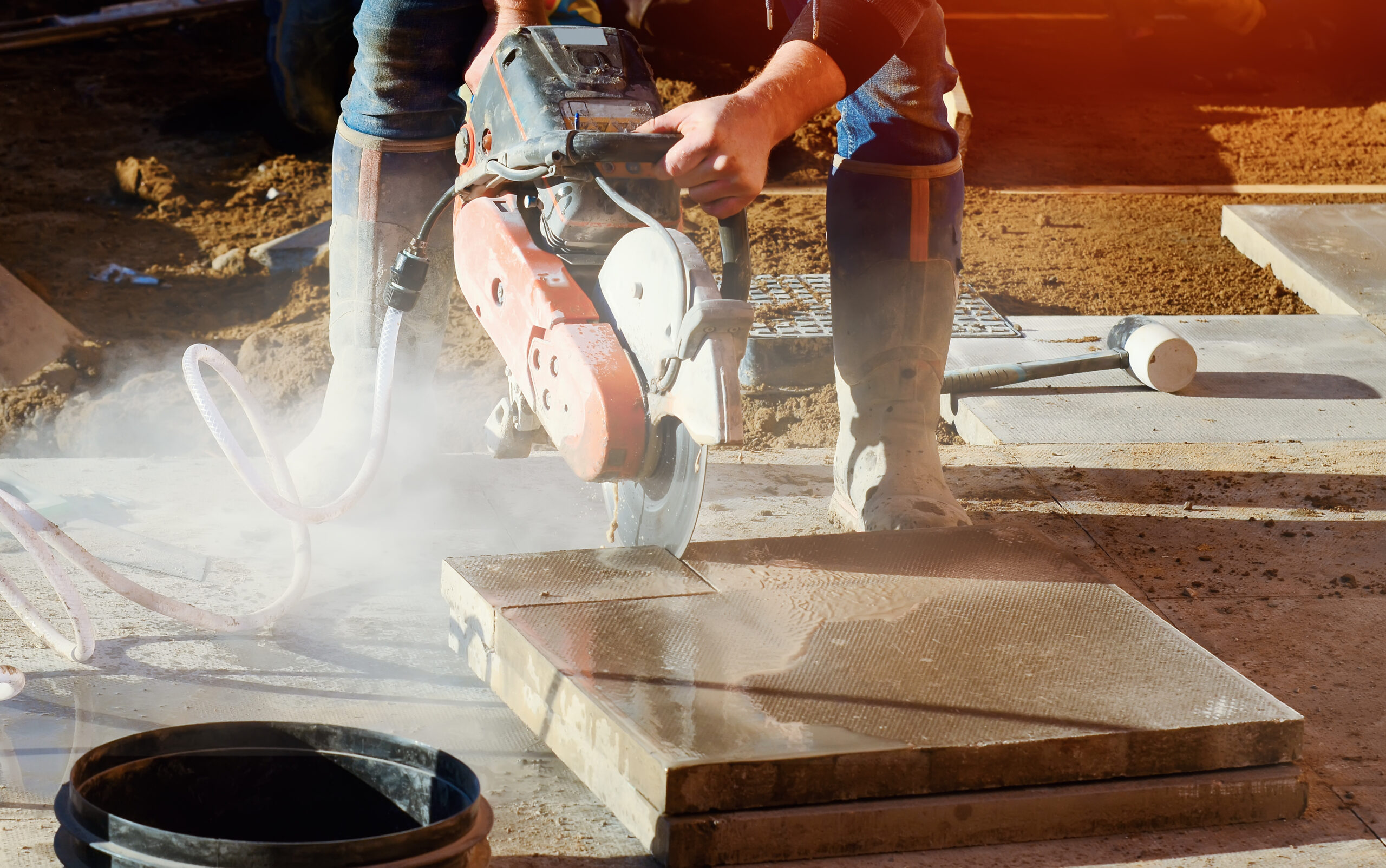Dust is an ever-present hazard in the construction industry as it creates risks to the health and well-being of workers. Construction sites generate various types of dust, including silica, wood, and concrete dust, which can harm the respiratory system and the health of those exposed to it. Organisations must be aware of the dangers of dust exposure for construction workers, put in place preventative measures, and enforce the utilisation of the correct PPE to safeguard workers’ health and safety.
Breathing construction dust causes dangerous and often fatal diseases such as lung cancer, asthma, Chronic Obstructive Pulmonary Disease (COPD) and silicosis. According to the HSE, “Over 500 construction workers are believed to die from exposure to silica dust every year.” [source]
Although construction dust is very obvious at times, some dust particles can be 100 times smaller than a grain of sand, meaning we may not see them, but they can still be inhaled and make their way into our lungs, causing damage.
Preventative Measures
Different preventative measures can help limit construction workers’ exposure to dust and, therefore, the detrimental health effects that this can have. The following are just three examples of preventative measures used to control the amount of construction dust workers are in contact with:
- Use tools which are fitted with extraction tools to remove the dust at source.
Several on-tool local exhaust ventilation (LEV) measures can limit the amount of construction dust that goes out into the atmosphere. However, the correct parts must be chosen for each tool, as the dust may need to be better controlled if not.
- Use water suppression as a way of reducing dust levels.
Water suppression is an excellent line of defence against dust. Water significantly reduces the dust emitted into the air around us, and tools like modern cut-off saws have attachments for water hoses, which can be supplied from a main feed.
- Provide suitable RPE to the operatives where dust cannot be reduced any further.
Respiratory Protective Equipment (RPE) comes in many different forms. It is designed to protect the wearer from various hazards, suit multiple work situations and match the specific requirements of the wearer. The law states that RPE should only be used after you have taken all other reasonably practical measures to prevent or control exposure.
To protect employees and others, employers should always comply with the workplace health and safety requirements in the Control of Substances Hazardous to Health Regulations 2002 (COSHH).
If your organisation needs advice and guidance on how best to safeguard workers from construction dust and its potentially deadly effects, Safetyform consultants are ready and waiting to help. We provide advisory services to small and medium-sized contracting organisations to ensure compliance with the duties of the Principal Contractor. So, get in touch to learn more – call 02922 677 182 or email info@safetyform.co.uk, and a team member will contact you as soon as possible.


Leave a Reply
You must be logged in to post a comment.